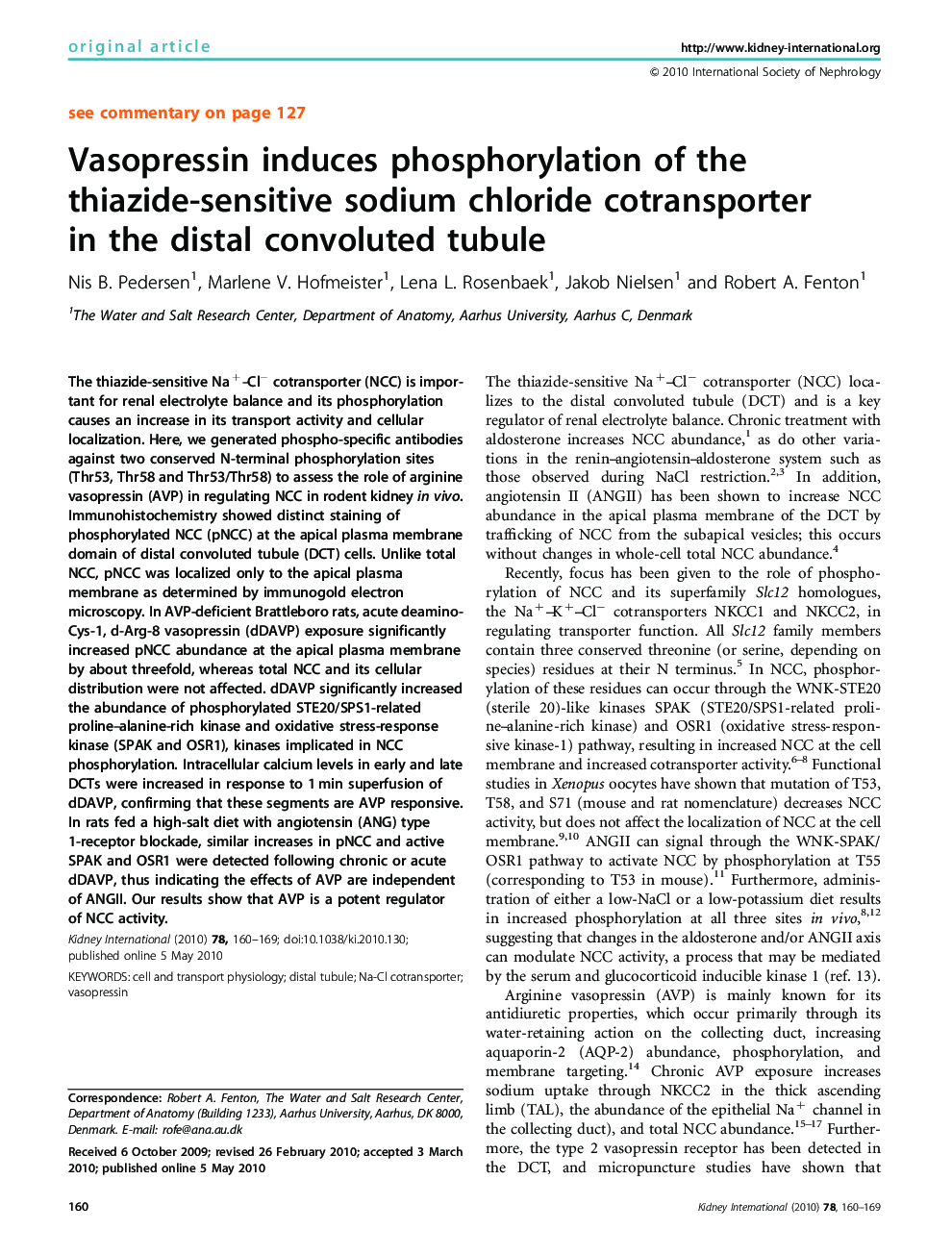| کد مقاله | کد نشریه | سال انتشار | مقاله انگلیسی | نسخه تمام متن |
|---|---|---|---|---|
| 3883946 | 1249447 | 2010 | 10 صفحه PDF | دانلود رایگان |

The thiazide-sensitive Na+–Cl− cotransporter (NCC) is important for renal electrolyte balance and its phosphorylation causes an increase in its transport activity and cellular localization. Here, we generated phospho-specific antibodies against two conserved N-terminal phosphorylation sites (Thr53, Thr58 and Thr53/Thr58) to assess the role of arginine vasopressin (AVP) in regulating NCC in rodent kidney in vivo. Immunohistochemistry showed distinct staining of phosphorylated NCC (pNCC) at the apical plasma membrane domain of distal convoluted tubule (DCT) cells. Unlike total NCC, pNCC was localized only to the apical plasma membrane as determined by immunogold electron microscopy. In AVP-deficient Brattleboro rats, acute deamino-Cys-1, d-Arg-8 vasopressin (dDAVP) exposure significantly increased pNCC abundance at the apical plasma membrane by about threefold, whereas total NCC and its cellular distribution were not affected. dDAVP significantly increased the abundance of phosphorylated STE20/SPS1-related proline–alanine-rich kinase and oxidative stress-response kinase (SPAK and OSR1), kinases implicated in NCC phosphorylation. Intracellular calcium levels in early and late DCTs were increased in response to 1 min superfusion of dDAVP, confirming that these segments are AVP responsive. In rats fed a high-salt diet with angiotensin (ANG) type 1-receptor blockade, similar increases in pNCC and active SPAK and OSR1 were detected following chronic or acute dDAVP, thus indicating the effects of AVP are independent of ANGII. Our results show that AVP is a potent regulator of NCC activity.
Journal: Kidney International - Volume 78, Issue 2, 2 July 2010, Pages 160–169